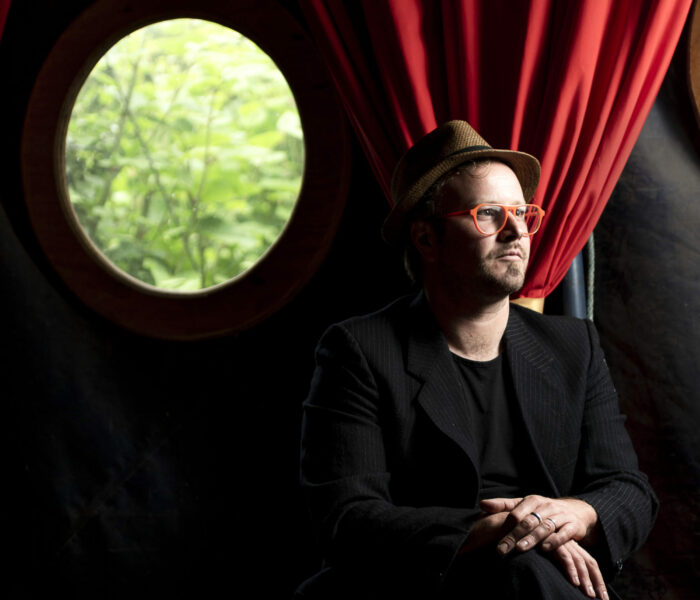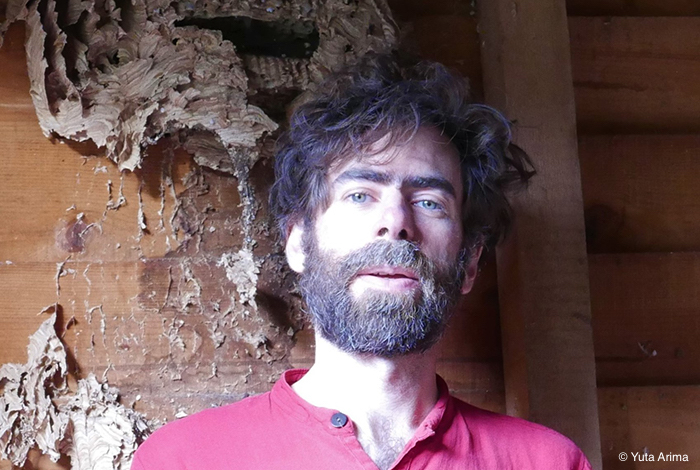Qu’ils en fassent une spécialité ou que ce soient des aventures ponctuelles, de plus en plus de compositeurs collaborent avec les écoles de musique et les conservatoires, écrivant pour les élèves. Témoignage croisé !
Quelle place occupe la composition de pièces pour les enfants et les adolescents dans votre activité ?
Alexandros Markeas : Je suis presque malgré moi reconnu comme un spécialiste du genre, surtout pour des opérations collectives : je reçois souvent des commandes de la part des conservatoires, de Démos, d’Orchestre à l’école, d’El Sistema Europe… C’est un volet important de mon activité de musicien. J’écris beaucoup pour chœur, pour piano car c’est mon instrument, pour des petites formations atypiques de musique de chambre, beaucoup de miniatures pour deux, trois instruments et des pièces pour orchestre de jeunes.
Jonathan Ponthier : Avant de tomber dans le bain de la musique dite « savante contemporaine », je viens du rock et des musiques orales. Depuis trois ans j’enseigne la composition au CRR d’Aubervilliers la Courneuve. La transmission occupe une grande place dans ma vie. Ces dernières années, j’ai reçu beaucoup de commandes de la part d’écoles de musique et je me suis vite rendu compte que transmission et création étaient profondément liées.
Qu’est-ce qui vous plaît dans le fait de composer pour les jeunes, voire très jeunes musiciens ?
A.M : Ce que j’aime, tout d’abord, c’est ce contact, cette transmission. J’y prends beaucoup de plaisir. Je viens du monde des conservatoires et j’aime l’atmosphère bruyante des mercredis après-midi où les enfants jouent et chantent ensemble.
J.P : Je travaille avec des enfants de tous les âges. Avec mon « opéra minute » Dansékinou, composé en 2015 et commandé par l’Arcal Ile-de-France, j’ai travaillé avec des petits de 4 à 7 ans. Je n’écris pas tant pour les enfants qu’avec eux : je les fais participer à toutes les étapes de création, dans le cadre d’ateliers. Les enfants sont très fins dans la perception qu’ils ont d’une œuvre en fabrication.
A quoi êtes-vous attentif ?
J.P : Cela dépend vraiment des âges. Le rapport au monde, aux sons n’est pas le même qu’ils aient 4 ou 12 ans.
A.M : Les morceaux pour les enfants ont nécessairement une dimension pédagogique, mais ils doivent comprendre pourquoi ils chantent ou jouent quelque-chose : il ne faut pas que ce ne soit un geste isolé de tout contexte, purement destiné à l’apprentissage théorique. Il faut, dans une partition pour enfant, une explication musicale, poétique, l’acquisition d’un geste, d’un paramètre de jeu, d’une technique. Le compositeur doit partir de quelque-chose qui leur parle, qui est repérable dans leur esprit, pour essayer de les amener plus loin, les ouvrir sur un monde sonore, poétique, technique jusque-là inconnu.
De quoi faut-il faire attention ? Quels sont les pièges à éviter ?
J.P : Il faut se méfier des préoccupations qu’on projette sur les enfants quand on écrit une pièce pour eux. Il ne faut pas se dire « Un gamin n’a pas la capacité d’entendre cela. » Il faut faire confiance aux oreilles des enfants, qui sont, au plan de l’exploration fondamentale du son, moins formatées que celles des adultes, c’est incontestable. Un enfant d’un an qui tape sur une table et rend ses parents fous, sculpte le sonore, fait ses gammes. Les enfants ont en eux, en puissance, une grande créativité sonore, qui peut devenir musicale (mais pas toujours !).
A.M : Le piège est d’aller vers la simplification du propos au-delà du raisonnable et, du coup, de mentir. Quand on s’adresse aux enfants en dehors de la musique, dans la vie de tous les jours, on a tendance à tout simplifier alors, qu’en réalité, ils comprennent bien plus que ce que l’on croit. Faire trop rudimentaire, trop simple est un danger. Mais composer quelque-chose de déconnecté de leur pensée est risqué aussi : par exemple une pièce qui serait uniquement fondée sur la transformation du son, ce qu’on appelle une pièce « logo centrée » en musique contemporaine, sans univers poétique qui la soutienne, serait trop abstraite : difficile pour les enfants de se l’approprier. Un de mes modèles est le recueil de composition pour enfants Jatekok de György Kurtág, qui propose des approches sonores et rythmiques très intéressantes.
Pourquoi est-il important de faire jouer et chanter des pièces d’aujourd’hui aux jeunes musiciens ?
J.P : Déjà, pour nous compositeurs, l’œuvre fraîchement composée n’est pas en surplomb du public pour qui elle est destinée. J’aime la dimension de circuit-court appliqué à la musique ! Il faut donner des outils aux plus jeunes pour pouvoir écouter une plus grande diversité de musiques, d’esthétiques, par la suite, sans a priori. Former le public de demain se fait dès le plus jeune âge. Il n’a jamais été aussi facile, grâce aux nouvelles technologies, de partager ses projets avec un public désireux de changer d’air musical, mais la formation, l’ouverture de l’oreille doit commencer tôt.
A.M : La composition pédagogique existe depuis des siècles et a même donné lieu à des chefs d’œuvre : Schumann, Bartók… Composer pour les enfants permet de former leur oreille, mais aussi celle des compositeurs, qui sont obligés de s’adapter à leurs jeunes interprètes. Cela permet de construire un socle, même inconscient, pour apprécier, plus tard, les musiques nouvelles. Et puis il ne faut pas toujours jouer la même chose aux élèves : rien n’est figé et gare au formatage de l’oreille ! Il faut montrer aux enfants que la musique se compose toujours, qu’elle est vivante.
Propos recueillis par Suzanne Gervais



)

